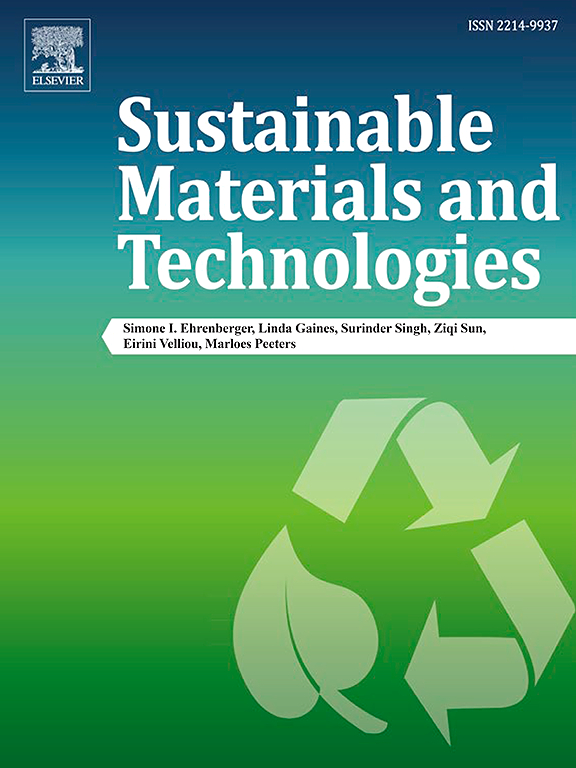利用海废浒苔粉作为可持续内固化剂减缓超高性能混凝土的自收缩
IF 8.6
2区 工程技术
Q1 ENERGY & FUELS
引用次数: 0
摘要
本研究利用海洋废弃物肠藻粉末(EPP)来减轻超高性能混凝土的自生收缩(AS)。首先研究了 EPP 的吸水率。然后研究了 EPP 对 UHPC 的新鲜特性、水化热、AS、机械强度和微观结构的影响。结果表明,添加 0.5 % ~ 1.5 % 的 EPP 后,UHPC 的 28 天 AS 降低了 25.6 % ~ 69.4 %。然而,基质的孔隙率明显增加,导致 UHPC 的抗压强度和抗折强度分别降低了 10.1 % ∼ 26.8 % 和 6.6 % ∼ 19.0 %。此外,在 UHPC 中掺入 EPP 可提高水泥的水化程度,并使 C-S-H 的平均链长增加 53.6%。利用 EPP 作为内部固化剂可降低 UHPC 的生产成本(与超吸收聚合物相比降低约 1.8%),并为 EPP 的资源利用提供了一种新方法。本文章由计算机程序翻译,如有差异,请以英文原文为准。
Using marine waste enteromorpha prolifera powder as a sustainable internal curing agent to mitigate autogenous shrinkage of UHPC
This study uses marine waste enteromorpha prolifera powder (EPP) to mitigate the autogenous shrinkage (AS) of UHPC. The water desorption of EPP was researched first. Then the influence of EPP on the fresh properties, hydration heat, AS, mechanical strength, and microstructure of UHPC was studied. The results showed that the 28 days AS of UHPC was reduced by 25.6 % ∼ 69.4 % after adding 0.5 % ∼ 1.5 % EPP. However, the porosity of the matrix was significantly increased, resulting in 10.1 % ∼ 26.8 % and 6.6 % ∼ 19.0 % reduction for compressive strength and flexural strength of UHPC, respectively. Moreover, incorporating EPP into UHPC can improve the hydration degree of cement and increase the average chain length of C-S-H by 53.6 %. Utilizing EPP as an internal curing agent can decrease the production cost of UHPC (about 1.8 % compared with superabsorbent polymers) and offer a novel approach for the resource utilization of EPP.
求助全文
通过发布文献求助,成功后即可免费获取论文全文。
去求助
来源期刊

Sustainable Materials and Technologies
Energy-Renewable Energy, Sustainability and the Environment
CiteScore
13.40
自引率
4.20%
发文量
158
审稿时长
45 days
期刊介绍:
Sustainable Materials and Technologies (SM&T), an international, cross-disciplinary, fully open access journal published by Elsevier, focuses on original full-length research articles and reviews. It covers applied or fundamental science of nano-, micro-, meso-, and macro-scale aspects of materials and technologies for sustainable development. SM&T gives special attention to contributions that bridge the knowledge gap between materials and system designs.
 求助内容:
求助内容: 应助结果提醒方式:
应助结果提醒方式:


